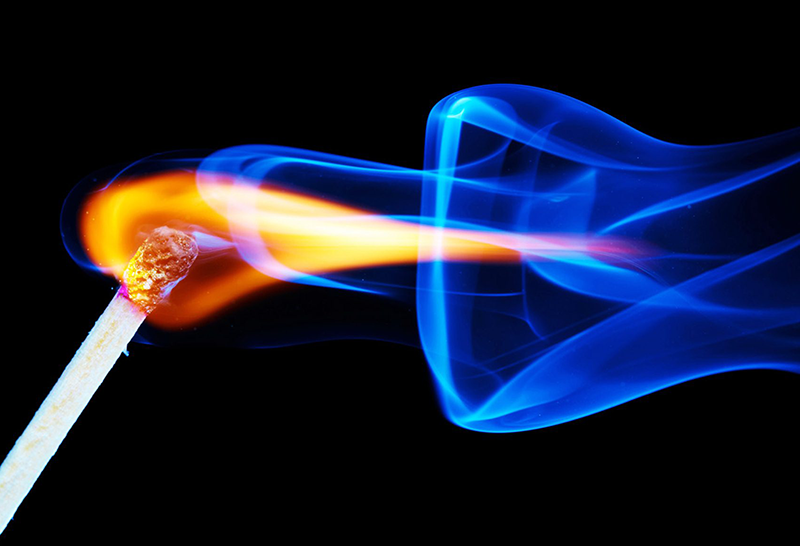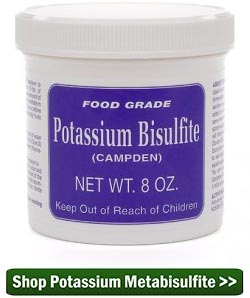 My homemade wine has started producing a burnt match smell after about 1 week of fermentation. No sulfur has been used in sterilization etc, can you advise? chuck it out?? cry???
My homemade wine has started producing a burnt match smell after about 1 week of fermentation. No sulfur has been used in sterilization etc, can you advise? chuck it out?? cry???
Thanks Carrie
—–
Hello Carrie,
What you are more than likely smelling is hydrogen sulfide that is being produced by the yeast. It is also often compared to a rotten egg or burning rubber smell, as well as the burnt matches, as you have suggest. All wine making yeast produce this gas to some degree, but if you are experiencing an smell that is stronger than normal, it could be that one of the following is occurring:
- Wild yeast is doing the fermenting.
Even if domesticated wine yeast was added, there is still a possibility of wild yeast fermenting along side it. This is something that can play out when making wine from fresh fruit. Wild forms of yeast will produce all kinds of off odors, including the burnt match odor your are describing.
- You are fermenting at too warm of temperature.
Fermenting at higher temperatures will entice the wine making yeast to produce higher levels of hydrogen sulfide. This, in turn, can cause your fermentation to smell like burnt matches. Fermentation temperatures as low as 78°F. can even potentially produce excessive hydrogen sulfide.
- The yeast does not have enough nutrients available.
You may want to consider adding yeast energizer, particularly if you have not done so already.
All three of the above reasons relate to putting the yeast under stress. Wild yeast hasn’t been bred to do such a big job, so it is stressed; too warm of a temperature will add stress to any living organism; and being short on nutrition would obviously be stressful, as well.
Usually the hydrogen sulfide will reduce to an acceptable level on its own by the time you are ready to bottle the wine. It will simply  release into the air and go away throughout the wine making process. However, if you get down to bottling the wine and the odor is still prevalent, there are still some things you can do to reduce it:
release into the air and go away throughout the wine making process. However, if you get down to bottling the wine and the odor is still prevalent, there are still some things you can do to reduce it:
- You can rack the wine several times in a splashing manner. This will give opportunity for the burnt match odor to leave the wine.
- You can also pour the wine over sanitized copper. The reaction of the wine to the copper will help the gas to release more easily. Copper wool stuffed into a funnel works well for this process.
It is important to remember that if you do either of these treatments, that you also add sulfites such as Campden tablets or potassium metabisulfite. Either one of these should be added to the wine afterwards. This will help to drive out the oxygen that that was saturated into the wine during the process. Too much oxygen saturated in a wine will promote oxidation. Coincidentally, sulfites help do drive out the hydrogen sulfide, as well.
out the oxygen that that was saturated into the wine during the process. Too much oxygen saturated in a wine will promote oxidation. Coincidentally, sulfites help do drive out the hydrogen sulfide, as well.
The real solution to making sure your fermentation does not smell like burnt matches is to keep the yeast happy. Use the right kind of yeast, keep it at a comfortable temperature, and make sure it has all the nutrition it needs.
Happy Winemaking

Thanks for the article! It answered my problem with a gassy smell from a batch two years ago. It was either the wild yeast (I used whole fruit) or too warm. I threw it out when it was time to bottle because I couldn’t stand to bottle the sub-par stinky wine.
As you say, almost all wine making yeast produce hydrogen sulfide and they will produce far more when the yeast is asked to ferment under stressful conditions but some yeast strains are notorious for their production of this gas and sometimes the combination of yeast and must is enough to create real problems for the wine maker. In other words, while the wine maker might assume that he or she is using poor protocols in their wine making sometimes even the best practices will result in the production of hydrogen sulfide.
I am trying to make an apple wine and this lot I am having trouble with being able to get the yeast to work. I have tried three times and still no fermentation, I might have added too much Sodium Bisulfite (campden) at the beginning. Is there a way to check for this condition and a way to remedy the solution if this the case or should I just call it a failure and dump this lot? Thanks for any and all help.
Phillip, if too much sulfite is the reason for the stuck fermentation, you can save the wine. The article posted below advise you what you need to do to get the excess sulfite in the juice. You might also want to take a look at our article on the most common causes of a stuck fermentation in the additional article posted below.
Too Much Sulfite
https://blog.eckraus.com/too-much-sulfite-wine-homemade
Top Reasons For Fermentation Failure
https://eckraus.com/wine-making-failure/